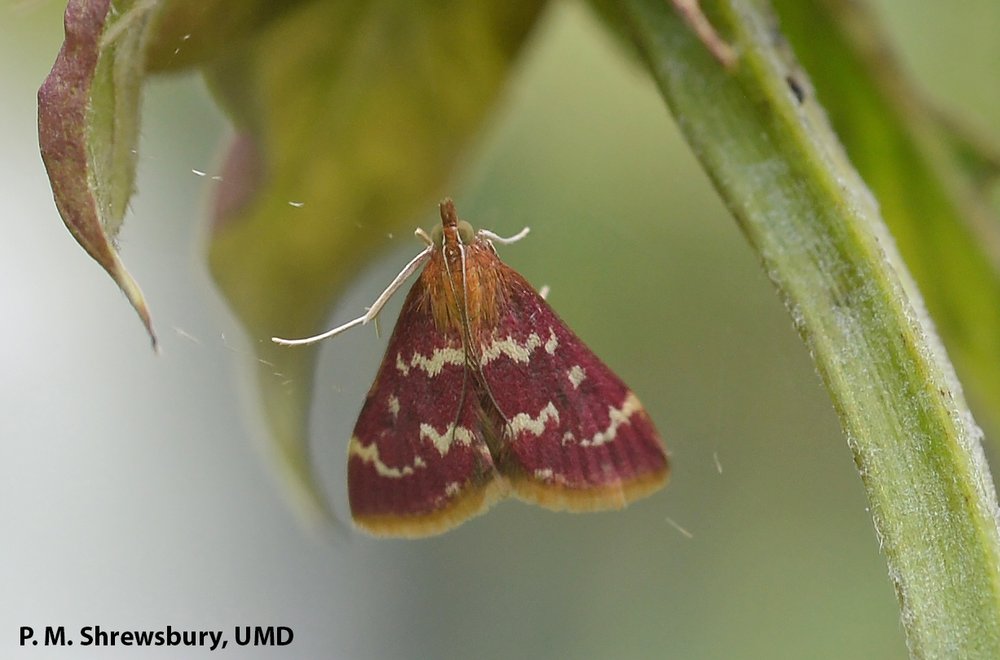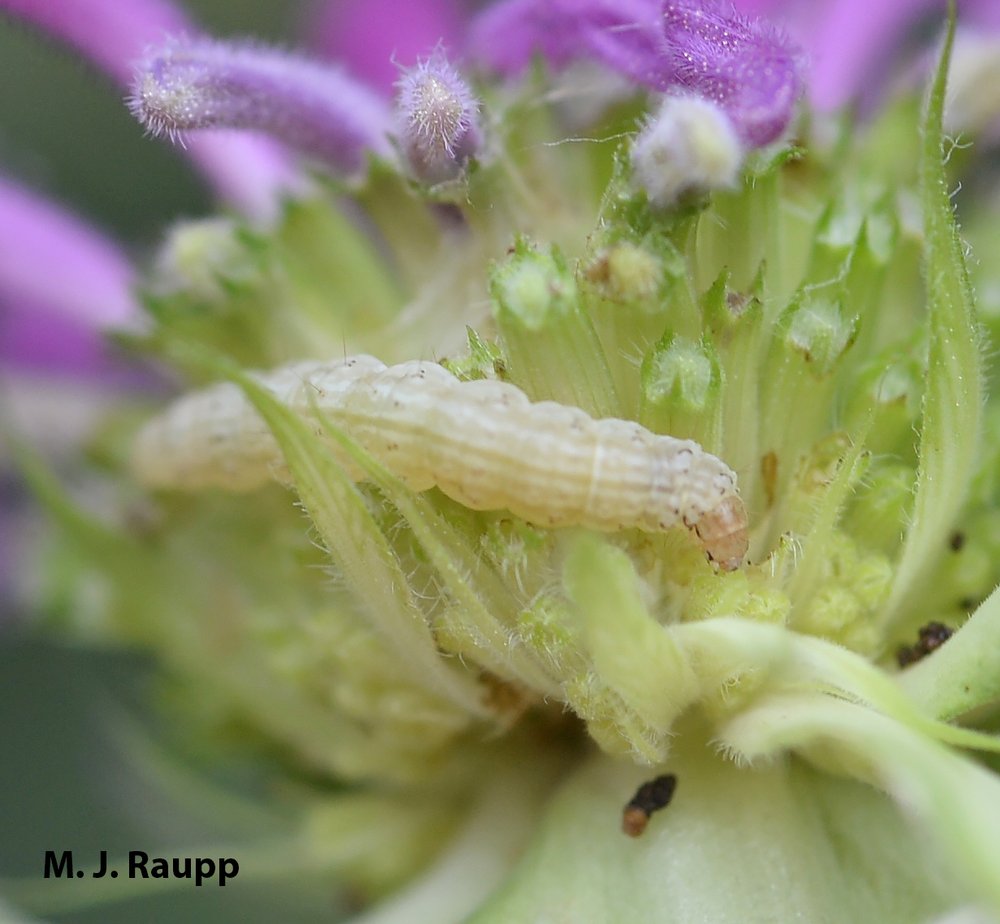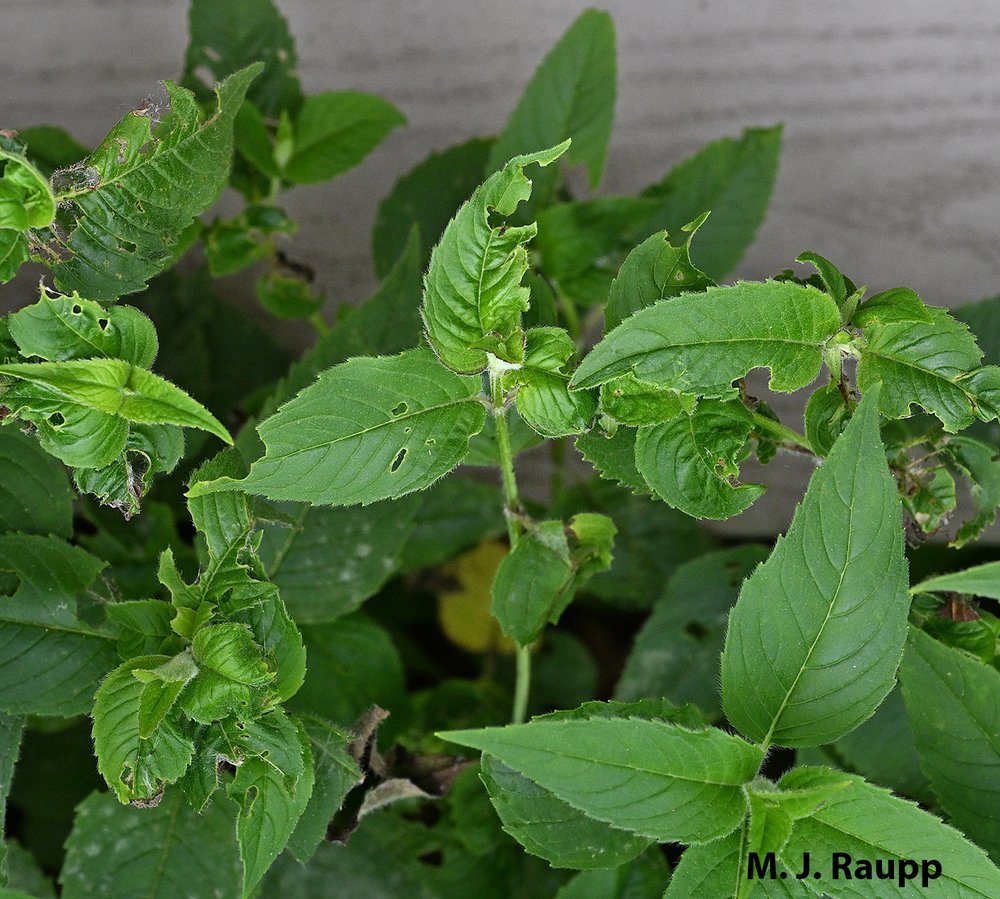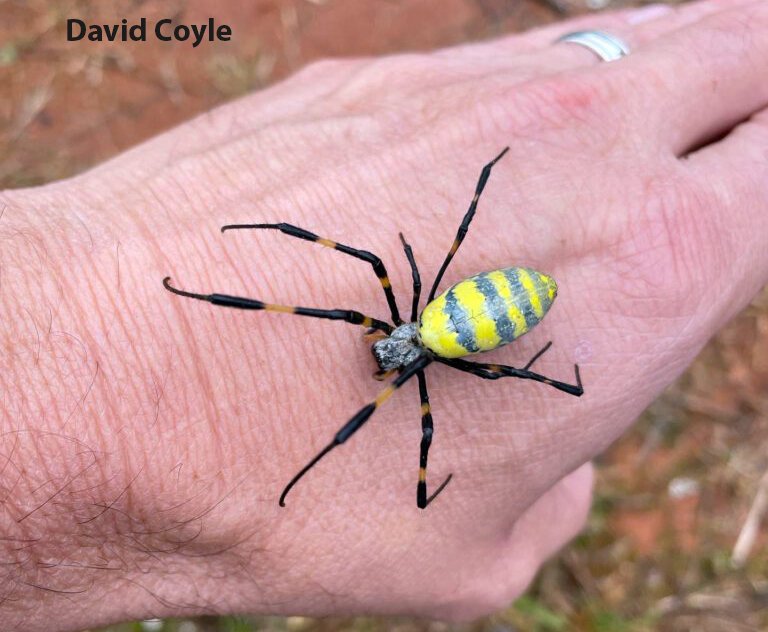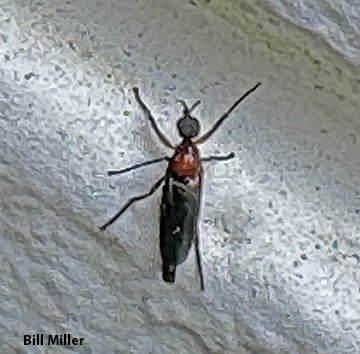
An adult of the common eastern firefly, Photinus pyralis. In this picture, the head is sticking out from underneath the shield-like projection of the thorax.
This week’s episode comes to you from Dr. Paula Shrewsbury, Entomologist at the University of Maryland, College Park, who created this great article for her “Beneficial of the Week” in the IPM Alerts - Landscape & Nursery.
“Fireflies have been lighting up my neighborhood (Howard Co. MD) since the first week of June. It looks like a good year for fireflies based on the amazing display of flashing lights I see every night. Usually around 8:00 p.m., just before my 3-year-old grandson’s bedtime, the flashing begins. It has become a ritual that before bed, we go outside and catch fireflies. Most of us have fond memories of catching fireflies as a kid and putting them in glass jars, which were kept by the bed to watch during the night.
Watch fireflies light up a small patch of landscape in front of my bed of perennials. Firefly larvae hunt soil-dwelling pests in that flower bed. Video compressed three times actual speed.
Fireflies, also known as lightning bugs, are really neither bugs nor flies. They are characterized as soft-winged beetles in the order Coleoptera and the family Lampyridae. There are over 2,200 known species of fireflies, of which about 165 species have been reported in the U.S. and Canada. Fireflies are found in temperate and tropical regions and in the humid regions of the Americas, Asia, and Europe. In the U.S., the abundance of fireflies is greater east of the Great Plains than in western states. Interestingly, fireflies that produce light are uncommon in western North America. Some firefly species are diurnal, and therefor have no need to create light. These species are known as daytime dark fireflies and they use chemical pheromones for mate attraction. Although the adults do not light, the larvae do glow at night, similar to eastern species.

Underside view of an adult firefly showing the abdomen where the light organ is located (white segments).
Most flashing species occur east of the Mississippi River, are about ¾” in length and are active at dusk and night. Adults and larvae of many firefly species exhibit bioluminescent – they glow in the dark! Many organisms such as bacteria, fungi, jellyfish, algae, fish, clams, snails, crustaceans, and of course insects, exhibit bioluminescence. Firefly species have special light organs that make the underside of their abdomens light up. How do fireflies make light? The light emitted by a firefly is actually a chemical reaction in the beetle’s abdomen. The light organ has special cells that contain a chemical called luciferin. An enzyme called luciferase combines oxygen with luciferin in these cells to create light. Scientists actually do not know how fireflies regulate their lights to turn them on and off. You might have also noticed how “cold” the light looks. This is because no infrared (or heat) or ultraviolet frequencies of light are emitted. Among the light-producing fireflies, lights are yellow, green, or pale red.
The purpose of this bioluminescence varies. It is believed that the flashes are part of a signaling system for attracting mates. Both males and females emit light intermittently or in specific flash patterns. The rhythmic flash patterns produced are specific for each species of firefly and vary by sex within a species. The flashes that we see are from the males that are attempting to attract a mate. For example, males of the common eastern firefly (Photinus pyralis) flash every six seconds. Females watch the light “show” and if a display from a specific male is particularly attractive, she will flash a response but only if it is from the male of the same species. The male descends to that location to mate with her. In addition to transferring sperm to the female during copulation, the male offers a nuptial gift of rich protein, which the female uses to provision the eggs that will soon start to develop in her ovaries. Interestingly, in one species of firefly, Photuris pensylvanica, the female mimics the flash pattern of another species, Photinis pyralis, to attract the male of the other species to her. When the male of the other species arrives, thinking he has found his mate - she eats it to obtain defensive compounds used to protect her eggs. A bad surprise for that male!
During daylight hours fireflies can be found patrolling leaves. By night, a flashing male firefly searches for a female. After locating his mate on an overhanging leaf, the courtship deal is sealed and the flashers turn off the lights for an intimate interlude. Watching insect behavior is really fascinating.
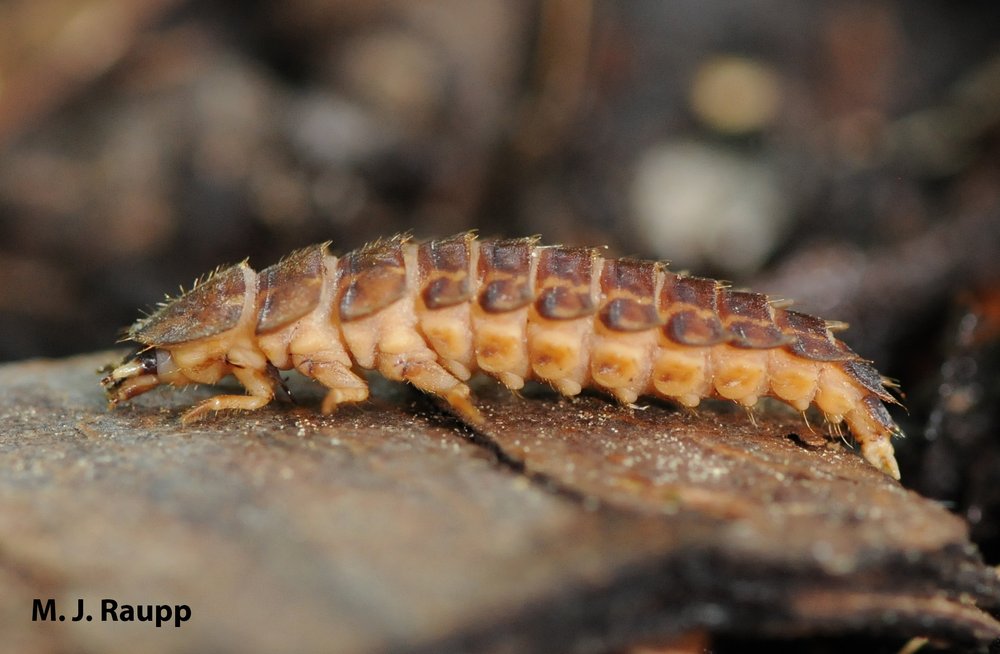
Glow-worms, larvae of fireflies, are predators that live in the soil and search for prey.
For the common eastern firefly, eggs are laid in moist soil and hatch about a month later. All immature fireflies (or larvae) are called glow-worms (see image). The larvae emit light too, though it is a low intensity glow rather than flashing like adults. The larvae of our eastern firefly develop over two summers, so they overwinter twice, before pupating and emerging as adults this time of the year. Most fireflies are reported to pupate in rotting logs or the furrows in the bark of tree trunks. Although the larvae of fireflies are referred to as glow-worms, technically this is not quite correct. Glow-worms are a type of firefly where the adult female is flightless and maintains the appearance of a larva and she emits a long-lasting glow, similar to larvae. The males have the appearance of an adult firefly. To make it more confusing, other insect larvae that glow are sometimes called glow-worms too.
Why are fireflies considered beneficials? Well, the soil active firefly larvae, or glow worms, are voracious predators of soft-bodied invertebrates and known to feed on slugs, snails, worms, and other soil-dwelling insects. Glow worms use their mandibles to inject prey with a paralyzing neurotoxin, making it defenseless, and then secrete digestive enzymes that liquify the prey making it easier to consume. Firefly larvae or glow-worms are believed to glow as a warning signal telling predators not to eat them, as they are mildly toxic and taste nasty. It is not well known what all adult fireflies feed on but some feed on pollen and nectar and some are reported not to feed at all.
Since most fireflies that produce light are in the Eastern U.S., it makes the nightly light shows we encounter here something special to behold for a few weeks during spring and early summer. Be sure to help young people you know, and others, enjoy the experience of observing and collecting fireflies. Be certain to release the little lights when you are done!”
Acknowledgements
Bug of the Week thanks Jackie for providing the inspiration for this episode. The interesting articles “Experimental tests of light-pollution impacts on nocturnal insect courtship and dispersal” by Drs. Aerial Firebaugh and Kyle Haynes, “Flash Signal Evolution, Mate Choice, and Predation in Fireflies” by Sara M. Lewis and Christopher K. Cratsley, and fascinating studies of Dr. Sara Lewis and Dr. Thomas Eisner and their colleagues, served as resources for this Bug of the Week.
